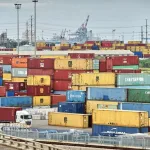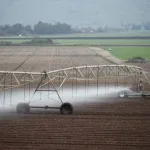- Business
Browse Business
- Technology
Browse Technology
Latest in Technology
Machine Learning Offers New Way to Predict Plant Water Use, Israeli Study Finds
5 minutes agoCyberDome Drill Highlights Growing Digital Threats to Israel’s National Systems
1 hour agoAfter Nova Massacre, Israeli Startup Builds Tech to Keep Families Connected in Crisis
4 hours agoFusion Control Breakthrough Brings Clean Energy Closer
4 hours ago - Politics
Browse Politics
Latest in Politics
Israel’s High Court Overturns Government’s Attempt to Remove Attorney General
2 days agoNegev Cities to Receive $31.8M Boost for Housing, R&D, and Airport Plans
5 days agoIsrael, Bolivia Restore Diplomatic Relations
6 days agoCyber Weaknesses Put Israeli Elections, Democracy at Risk, State Comptroller Warns
1 week ago - Security
Browse Security
Latest in Security
CyberDome Drill Highlights Growing Digital Threats to Israel’s National Systems
4 minutes agoAfter Nova Massacre, Israeli Startup Builds Tech to Keep Families Connected in Crisis
3 hours agoIranian Missile Fragments Become Symbol of Hope at Reopened Israeli Care Facility
1 day agoIran Suspected in Deadly Sydney Chanukah Shooting
2 days ago - Economy
Browse Economy
Latest in Economy
Israeli Exports on the Rise, Approaching Pre-War Peak
2 minutes agoTrade Momentum Builds as German Business Leaders Visit Israel
3 hours agoNegev Cities to Receive $31.8M Boost for Housing, R&D, and Airport Plans
5 days agoHaredi Enlistment Would Ease Army and Economic Strain, Bank of Israel Says
5 days ago - Crime
Latest in Crime
Iran Suspected in Deadly Sydney Chanukah Shooting
2 days agoIsrael’s Anti-Corruption Chief Investigated for Alleged Ties to Crime Network
6 days agoIsraeli Police Probe Fatal Shooting as Arab-Sector Murder Toll Climbs to 241
6 days agoIsraeli Authorities Charge Ashkelon Resident Over Months-Long Ties to Iranian Operatives
2 weeks ago - Society
Browse Society
Latest in Society
Iranian Missile Fragments Become Symbol of Hope at Reopened Israeli Care Facility
1 day ago‘Vile’: Israeli Leaders Condemn Deadly Sydney Chanukah Attack
2 days agoIsrael’s High Court Overturns Government’s Attempt to Remove Attorney General
2 days agoOne Dead, Dozens Rescued as Storm Byron Sweeps Across Israel
5 days ago - Services
Travel & Transportation
Technology & Utilities
Religious & Cultural
Information & Directories
Government & Public Services
Jerusalem, 6 August, 2025 (TPS-IL) — Israel’s Ministry of Environmental Protection today, Wednesday, published the findings of the first survey of its kind in Israel on the composition of household waste in green bins (excluding lumpy waste, trimmings and streams separated at source). The survey provides a snapshot of the amount of waste in Israel and its composition.
Key data:
Amount of waste per capita – The amount of waste thrown into the green bin in the population on average is 0.73 kg per day per capita.
Waste components in green bins – The most prominent component in the Israeli trash can is organic material originating from the kitchen, accounting for approximately 39% of the total weight of waste. The proportion of organic waste originating from the kitchen in the trash can decreased compared to the previous national waste survey, conducted in 2012-2013 (44%).
Packaging waste is separated at source – Only about 6% of packaging waste produced in households is collected in designated bins. This figure reinforces the need to expand the distribution of recycling bins near green bins and increase public awareness to increase the rate of separation for recycling.
The implications derived from these data are that the potential for recycling and landfill prevention, as a result of optimal implementation of the Packaging Law, is far from being realized, and most of the potential lies with local authorities and residents’ homes, said the Ministry.




















